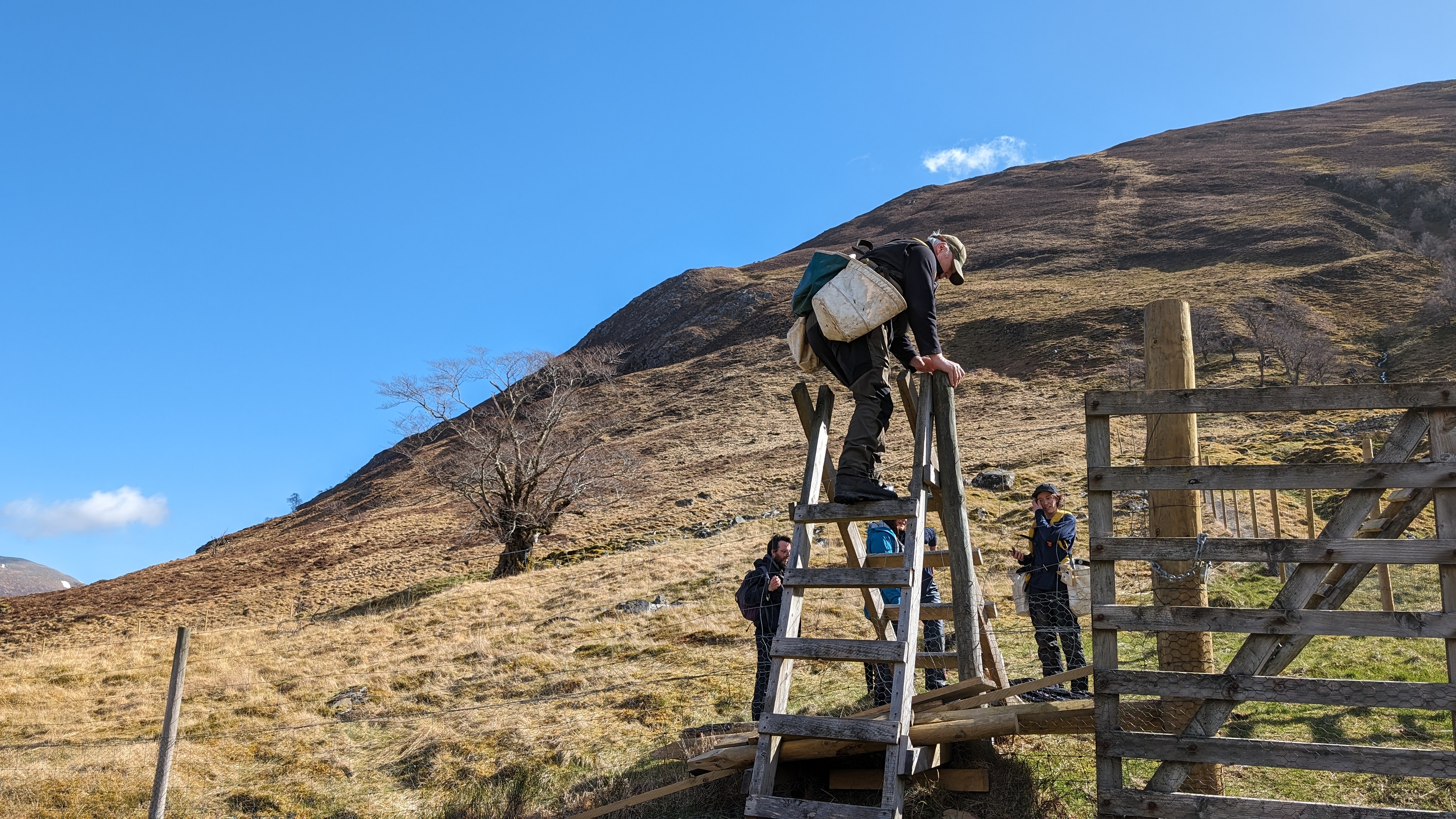The 'Last Ent of Affric' is no longer alone
An ancient elm tree that has stood alone in Glen Affric for hundreds of years is now the guardian over a new generation of its species. Known as the Last Ent of Affric in homage to the tree-shepherds from Tolkien’s The Lord of the Rings, the tree has been chosen to help in the fight against Dutch elm disease.
Thirty-five young elm trees have been transferred from the Royal Botanic Garden Edinburgh and replanted next to the Last Ent of Affric, which was awarded Scottish Tree of the Year in 2019. These will be the first of 200 trees planted over the next two years, with our team working alongside the University of the Highlands and Islands and the Royal Botanic Garden Edinburgh. This work forms part of efforts to save the species from Dutch elm disease through the Scottish Plant Recovery project.
The project involves cultivating disease resistant seedlings and then planting them at suitable sites. It is hoped there will be cross pollination between the seedlings – and maybe even with the mature wych elm itself – to help in the recovery, from decades of loss, for one of Scotland’s most majestic native trees.
Having lived hidden away, many miles from the closest tree of the same species, the old elm of Glen Affric has escaped the ravages of Dutch elm disease. It is fitting this site has been chosen as part of efforts to save the wych elm.
Sam Brown, Forester at Forestry and Land Scotland said:
"Glen Affric also benefits from ongoing conservation efforts between ourselves and our partners that includes managing deer populations. By limiting or removing the chance of deer damage to the young trees we can give them a better chance of survival.
Our local FLS teams - specifically the craftsperson squad – have worked very hard in all weather, on difficult terrain to install a fenced enclosure that has made the project possible."
The recovery of the wych elm is part of a project aiming to increase the numbers and distribution of ten threatened native plants and is funded by a three-year grant totalling £715,000 from the Scottish Government’s Nature Restoration Fund".
Dr Max Coleman of the Royal Botanic Garden Edinburgh explains:
"Using surviving, large wych elms in the Scottish Borders, exposed to Dutch elm disease for around 40 years, we have bred a new generation of seedlings that we hope have inherited resilience to disease from both parents.
The offspring of these rare, promising trees are being planted in carefully selected sites that meet their needs and offer potential for natural spread. This work is assisting the formation of new populations of wild elms that have the genes and the genetic diversity that we hope will enable survival and adaptation in a changing environment."



